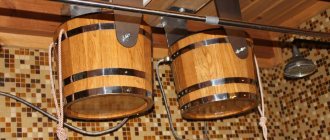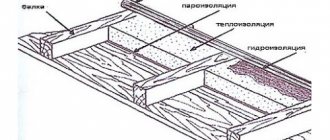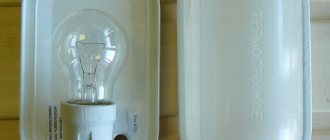Rolling around in a snowdrift, diving into an ice hole and being doused with ice water is a classic and ancient pastime of a real Russian bathhouse. However, nowadays there are bathhouses literally at every step, and not every one of them is located on the banks of a river, a forest lake, or, at worst, a city pond. Why is there a lake there? Not every bathhouse even has a swimming pool or plunge pool. Left without a breathtaking procedure? Whatever the case! A bucket for a bath and a desire are the key to the fact that any, even the most unprepossessing washroom can be equipped with its own waterfall, albeit not the Niagara waterfall, in size, but very close to it in feel.
From wooden boxes to smart technology
Such a simple and familiar object as a trash can came into use relatively recently: wooden boxes with lids appeared in Paris at the end of the 19th century, and in Moscow even later - less than a hundred years ago. In such a short period of time, waste containers have been transformed and are now presented in a variety of modifications: from ordinary open buckets to sensory containers and new generation devices that can compress, freeze or even recycle waste. And if it is not difficult to decide on the first option, choosing an innovative model requires a more careful approach.
How to choose a trash can
In order for a bucket to successfully cope with its main function - storing garbage, when choosing it you will have to take into account many parameters. Let's start with the most obvious - volume, shape, material.
Volume
The first step is to choose the size of the bucket: if it is too small, it will quickly overflow; if it is too large, waste will accumulate for a long time and smell unpleasant. The required volume of a trash can is determined based on the size of the family. A 5-liter container is enough for one person; three people will need a trash can with a volume of 15 liters or more.
Location
Most often, a garbage container is placed under the sink, but this is not the only option: the container can be installed in a kitchen cabinet, hung on a cabinet door, or built under a countertop. The trash can can also be placed outside, and in order not to attract unnecessary attention to it, in this case it is better to choose discreet colors that are close to the tones of the kitchen furniture. But you don’t have to hide stylish designer models – they will fit well into any interior.
Form
The shape of the trash can will largely depend on its location. It is easiest to place a rectangular or triangular trash can in a cabinet, niche or against a wall; a round bin will require a little more space. But it is better to avoid overly complex configurations with internal protrusions: dirt and germs will accumulate in the corners, and it is more difficult to wash such containers.
Material
Modern garbage cans are made mainly of two materials: plastic or stainless steel. The advantage of plastic buckets is their lightness and availability: their prices start from 200 rubles. Steel ones are about twice as heavy and cost more - from 1,500 rubles, but they are stronger and more durable.
What is needed for a “Russian shower”?
The improved “Russian shower” attracts with its ease of use and design simplicity. Surely, the craftsmen examining the finished cooperage product had thoughts about applying their own efforts. Without a doubt, it’s easier and easier to buy, but it’s much more interesting to tinker with making it yourself. The process is extremely exciting, and the result can be boasted to your guests. And a considerable amount is saved, because high-quality models of dousing buckets are quite expensive.
We found out that to assemble an extreme shower with our own hands we will need:
- wooden container with a capacity of 10 to 40 liters;
- brackets capable of supporting the weight of a water container;
- preferred type float valve;
- metal rod - a piece of smooth reinforcement grade A3. The diameter of this rod can be from 8 to 14 cm, because the size depends on the calculated weight of the dousing device filled with water;
- ball valve;
- a piece of flexible hose.
You can purchase the entire list in a store and, by drilling three technological holes in a wooden bucket to install a metal axis and a float, you can quickly and easily make a dousing device. You can buy only that part of the mini-shower parts, which is pointless to do with your own hands. The home craftsman has economic justification for showing skill in making brackets and containers. So we will discuss folk methods of their production.
Types of trash cans
Having decided on the dimensions and material, we move on to the main thing - choosing a suitable container design. Depending on the design features, trash cans are divided into many types:
- open,
- with lid,
- with pedal,
- with abs,
- built-in,
- sensory,
- sorting systems.
Open buckets
Pros. Lightweight and accessible: such containers weigh from
300 g, their prices range from 100 to 1500 rubles. There are original solutions: for example, the Japanese Tubelor bucket consists of two parts. A garbage bag is inserted into the lower bucket of smaller diameter, and a decorative part made of bright plastic is put on top.
Minuses. Due to the lack of a lid, it is only suitable for dry waste: paper, cardboard, plastic, husks or shells.
Buckets with lid
Buckets with lids and valves are available in the assortment of the German company Wesco, the Dutch company Brabantia, Koziol, the cost is from 3,500 to 22,000 rubles.
Pros. The buckets are easy to use and versatile: the lid blocks odors.
Minuses. The lid can be removable, moves on hinges or is fixed open. But in any case, you have to take it, hold it or cover it with your hand.
Buckets with pedal
Reliable and stylish pedal tanks are supplied to the market by Wesco and Brabantia. Price range - from 2,500 to 15,500 rubles.
Pros. There is no need to touch the lid with your hands - to open the trash can, just press the pedal with your foot. Another advantage is their compactness: such buckets are usually narrow and do not require much space.
Minuses. The pedal mechanism wears out over time and the lid becomes warped. You can’t hide the bucket behind the facade of the cabinet: it’s impossible to use the pedal there.
Buckets with press
A garbage can equipped with a press allows you to compact waste and pack the resulting briquettes in a special film. A manually recessed lid or a mechanical or electric pedal is used as a press.
Pros. Compacted waste takes up little space and more waste can fit in the bin. No unpleasant odor. Pedal and electric models keep your hands clean.
Minuses. Large sizes and high price: for a bucket with an electric press you will have to pay more than 20,000 rubles. You can buy a manual model cheaper - from 5,000 rubles, but the lid will have to be washed after use. A bucket with a press is not suitable for leftover food: they cannot be stored for a long time.
Built-in buckets
Garbage bins are built into a kitchen cabinet, sink niche, under a countertop, or mounted on the door of one of the cabinets using static holders or a rotating carousel. Pull-out containers mounted on guides are often installed in cabinets and under the sink.
Pros. Saving internal space. Convenience: retractable models slide out when the door is opened. In this case, you don’t even need to lift the lid - it is fixed inside the cabinet. Containers built into the countertop can be placed in any convenient place, for example, next to the sink. They are often equipped with a lid with a garbage disposer. A wide range of built-in waste bins can be found from the Dutch manufacturer Brabantia.
Minuses. High price - from 4,500 to 11,500 rubles.
Sensory buckets
Sensor waste containers operate on batteries and are equipped with an infrared motion sensor, so the lid opens automatically - just put your hand near it - and closes after a few seconds. The smartest models can even detect the size of debris and will open exactly as needed. Cost - from 4,000 to 20,000 rubles. Touch bins are produced by the American company Simple human and the German company Welt Wasser.
Pros. Contact with the cover is excluded. These containers are usually compact and designed to last a long time.
Minuses. You need to regularly change the batteries and keep the sensor clean: if it gets dirty, the lid will stop responding to movement.
Sorting systems
This is a whole complex of several containers for separate waste collection: food, household, glass, plastic. Some of the most popular sorting systems are the German companies Blanco and Hailo.
Pros. Environmental friendliness. It is convenient to use such systems if where you live, separate waste collection is provided.
Minuses. They take up a lot of space and require special fasteners for installation. This is the most expensive option: the price of several tanks starts from 4,000 and reaches 35,000 rubles.
The principle of operation of the dousing device
The device, called a dousing device, is a modernized version of a wooden bucket. It was invented by ancient Russian bathhouse attendants. In the old days it was made from birch bark or from a solid log by chiseling a cavity. Later, bathhouses and other containers were made by coopers from neatly planed and polished wooden dies, tightly intercepted by two turns of rope or metal strip.
Two holes were made in the opposite walls of the wooden dousing bucket into which a wooden pin was inserted. A kind of brackets were made from bars or thin logs. They served as a support for the pin along with a dousing container rotating around it. To control the water supply, the bucket was equipped with a rope or a thin chain. In order to trigger a cooling waterfall, you had to simply “pull the string.” If they pulled harder, all the icy contents would fall onto the steamed body in an icy stream. If you weakened the applied force, refreshed yourself slightly - and adjusted the “parameters” of the water supply.
The dousing device was suspended from the ceiling of the bathhouse so that a person standing at full height could fit under it. There were no special rules for its location: they focused on convenience. To keep the water in the dousing bucket pleasantly cool, they tried not to install it next to the steam room. The difficult part was the process of filling the high-hanging container. Nowadays this difficult work is entrusted to a flexible hose connected to the bath water supply. The loud term “device” was obtained due to the installation of a signal-overriding system such as a toilet float. Other radical changes bypassed the main structural elements. Those. The dousing device remained a bucket suspended from the bathhouse ceiling, but much more advanced in terms of comfortable use.
Let us summarize and at the same time describe the main design components:
- A modernized dousing bucket for a bathhouse is a wooden container secured with brackets on the wall with a float system through which water is supplied. Sometimes a plastic or galvanized liner is rigidly inserted inside a wooden container to protect the wood from damage;
- The device is equipped with a float, which spontaneously shuts off the flow of water when the bucket is completely filled with water. When emptying, access to the stream opens again;
- the container is connected to the bath water supply or to a separate storage tank installed specifically for this mini-shower;
- The float valve is connected to the water supply through a pipe with a flexible hose that does not interfere with the rotation of the bucket around the axis of the metal pin, which is used most often; bolted fastenings are less commonly used;
- A ball valve is installed at the entrance to the device to shut off the water supply in order to preserve the bath water supply system.
The presence of water supply in the bathhouse is a favorable condition, but not at all necessary for installing a dousing device. Nobody forbids you to periodically fill it manually.
The container can generally be installed outside to spontaneously collect very useful and soft rainwater. Mandatory for the internal location is a drain ladder through which water will be discharged into the sewer. However, there are exceptions: these are bathhouses with pouring floors and, of course, installing a pouring bucket in an open area outside the room.
This article will tell you more about sewerage in a bathhouse.
How to care for your trash can
To make your trash can last longer, just follow a few simple rules for caring for it:
- take out the trash every day;
- use garbage bags that are slightly larger in volume than a bucket - this will ensure its cleanliness;
- before filling a new bag, wipe the bucket with a damp cloth, wipe with a dry one and pour a little soda on the bottom of the container;
- Another way to eliminate unpleasant odors is to add a few drops of citrus essential oils to the washing water;
- in built-in models, carbon filters can be used for the same purpose;
- Heavy stains are removed using a stiff brush and a disinfectant detergent.











